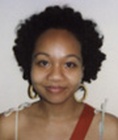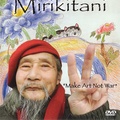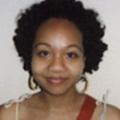The Academy Award-winning 2004 film Crash was touted as a painfully honest and true-to-life portrayal of race relations in Los Angeles, but when I viewed the film, there was very little about it that resembled the city that my family has called home for several generations.
(Perhaps this is why the movie is on my list of top ten least favorite movies of all time, but, alas, that is a story for another time.) The interactions in the film were not similar to any that I either experienced or witnessed in Los Angeles. If anything, the film reminded me more of a few bizarre racial incidents I experienced during my college years in New York City, where both ethnic diversity and expansive racial divides exist in abundance—some would argue, much like Los Angeles. This article is my first attempt to synthesize the culture clashes I have experienced in the two American cities that I call home.
Part 1: L.A. Youth
From first through eighth grades (with the exception of fourth), I attended Maryknoll School, a small, Catholic elementary school located in downtown Los Angeles’ arts district, nestled between the neighborhoods of Little Tokyo and East L.A.’s Boyle Heights. Intertwined in Maryknoll’s history and mine are the stories of Maryknoll’s Catholic missionaries to Japan, and the Japanese Americans that settled in Boyle Heights. My kibei nisei grandmother was among those converted from Buddhism to Catholicism, and like other Japanese Catholics living in Boyle Heights, she sent my mother and aunts to Maryknoll. Years later, my cousins and I attended Maryknoll too. In 1994, I was among the last students to graduate from the school before it closed down, to later reopen as a Japanese Catholic Center.
By the time I attended Maryknoll, the ethnic demographics of its student population had shifted dramatically from the days when my mother, aunts, and older cousins attended. Once predominantly Japanese, it had since become a commuter school that was home to a mixture of working class Asians and Latinos, with few Japanese families remaining. Its Nikkei roots were still somewhat palpable, but the addition of other cultures made our school feel a bit more international. At one Christmas program, we sang “Joy to the World” in about seven different languages, and it felt as if everyone’s heritage was represented. In second grade, a parent taught us an Okinawan folk dance that we later performed at a local mall. My best friends were Kazanna (one of the few students of mixed European American heritage), Jennifer (of Guatemalan and Japanese heritage), and the two Monicas (both Chicana). Although Kazanna was the only Irish American student I knew, Maryknoll’s Boy Scout troop held an annual St. Patrick’s Day dinner complete with corned beef and cabbage. Many of our classmates and most of the teachers were Filipino. Our potlucks included pancit, lumpia, teriyaki, enchiladas, sushi, chicken adobo, pizza, and various American junk food, and we ate everything without hesitation because it just tasted good. Around Christmastime, we would all go to J-town to take pictures with “Shogun Santa” in Japanese Village Plaza. This was the environment in which I felt most at home—a setting which represented a sampling of Los Angeles’ ethnic heterogeneity.
In retrospect, I recognize how significant this time period was in shaping my worldview. Exposure to a variety of different cultures at such a young age was really important to me, as the cultural exchange my friends and I experienced during those years occurred so naturally. My friends and I were open to learning about each other’s heritages not because we were being forced to due to a mandate for multiculturalism but instead because we were sincerely curious about each other. As a result of this organic intermingling of cultures and histories both at school and in my multiethnic extended family, I had personal connections with such a wide variety of people that I never grew up viewing other cultures as foreign, weird, or bad. It was not until much later that I learned that this type of openness towards others was something that I took for granted.
After Maryknoll, I left the familiarity of downtown to attend Mayfield, an all-girl, Catholic high school located in an affluent part of Pasadena (a suburb of Los Angeles). Mayfield was composed of dramatically different demographics, predominantly upper income and Caucasian. Coming from a commuter background, with a mother who worked full-time, was a native Angelena, and exposed me to many different parts of Los Angeles, I was surprised to learn that very few Mayfield students had ever ventured outside of Pasadena and its neighboring suburban communities.
Despite this initial culture shock, I eventually made friends with some girls who had similar tastes in humor and music. But unfortunately, all was not good—my identity was challenged on multiple occasions—not by white classmates, but by my Asian peers. Perhaps in reaction to the dearth of ethnic diversity at the school, nearly all of the Asian students belonged to tightly-knit Asian cliques. Although I was accustomed to hanging around other Asians, I felt totally disconnected from those at Mayfield. I attempted to participate in the Pacific Asian Club only to be met with cold stares and ignored during its off-campus outings. This was the first time that I remember my Asian-ness being questioned so blatantly, and as an introverted and awkward freshman, this rejection really hurt. I actively swore off participation in ethnic activities until a friend of mine became president of the club in our senior year. (I did not participate in the Black Student Union during high school because I was already friends with its three members—that’s how small the African American population was!)
My four years at Mayfield provided me with ample learning opportunities both in and out of the classroom. As I rejoined the club from which I was once rejected and connected with a flurry of new friends from other activities, I experienced a zen-like moment of inner peace. Maybe it was a latent effect of our touchy-feeling senior retreat, but a funny thing happened—as graduation neared, I somehow felt a bit closer to all of my classmates, discovering that almost everyone has at least one endearing quality (strange but true). Mayfield was a great growing experience for me because it also challenged me to address my own assumptions about those who I perceived to be very different from me—wealthy white girls. I learned that many of the girls in my class, while undeniably privileged, were relatively down-to-earth and open-minded despite their sheltered upbringings. But perhaps most importantly, Mayfield also taught me that I could create my own sense of home wherever I chose to build it. This particular lesson became even more valuable after my high school graduation, when I moved from California to New York for college.
© 2008 Simone Momoye Fujita





